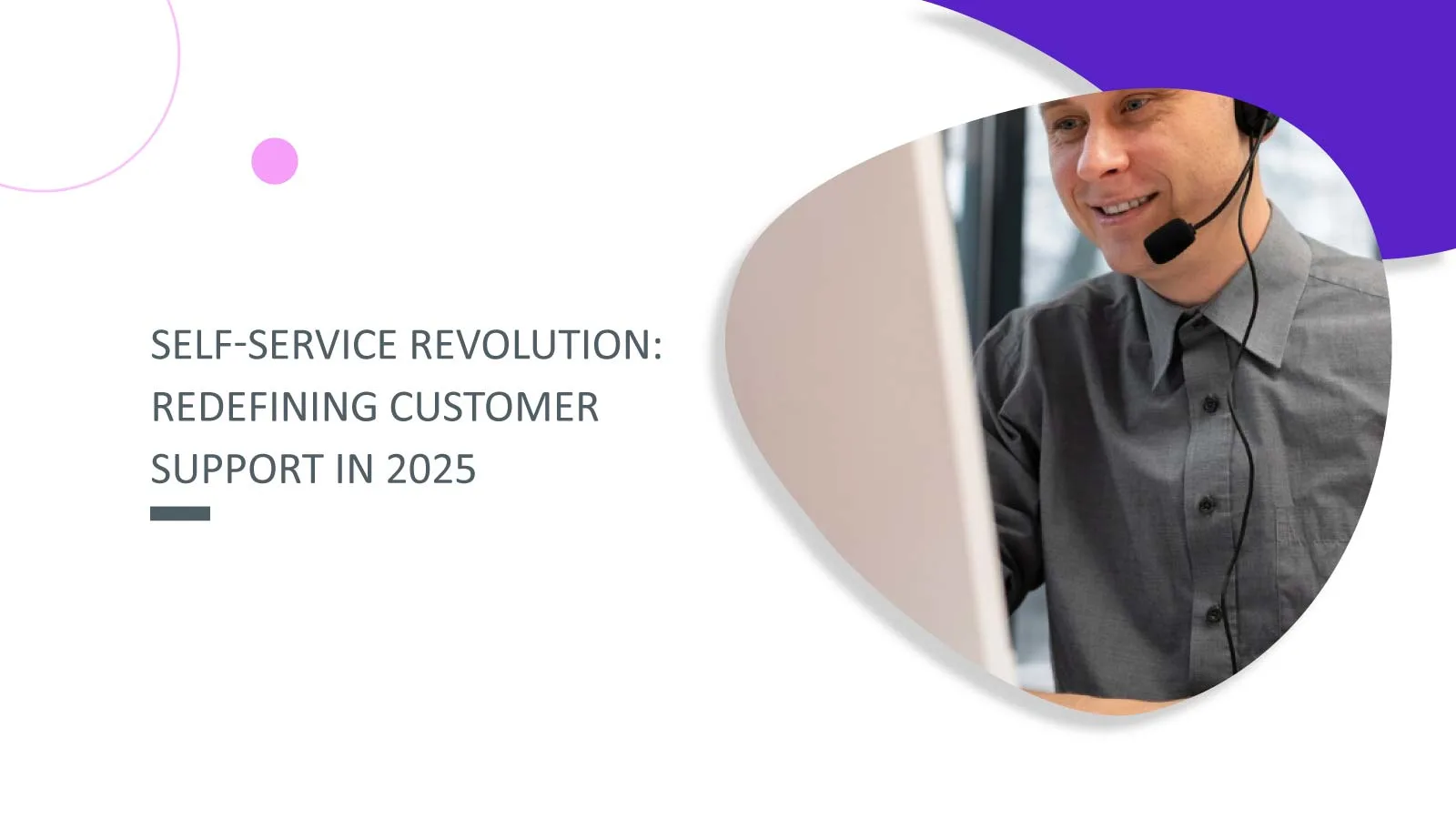Let's get real: customer support has been a headache for years. Whether waiting on hold, spinning through convoluted FAQ pages, or explaining your problem to three different reps, the process hasn't always felt very supportive.
But in 2025, something's changed. The rise of smarter, more intuitive self-service tools is changing how we experience support, not just on the surface, but at a foundational level. And the shift isn’t just technological. It’s human.
From Frustration to Fluidity: Why Self-Service Has Gained Traction
Until recently, "self-service" usually equated to "figure it out yourself." For the majority of customers, it wasn't a choice, it was a last resort. Now, with today's self-service experiences, however, there's a clear intent: to eliminate friction and assist.
Customers are busy. Whether sorting work emails over lunch or resolving a delivery problem in between meetings, time is valuable. Self-service, when executed well, empowers customers. It answers questions fast, discreetly, and without redundancy.
As per a 2025 CX Trends report, more than 70% of customers now opt for self-service whenever it works consistently. Not because they do not enjoy talking to a human being, but because they cherish speed, simplicity, and convenience.
Real Example: A Better Tuesday for Jordan
Consider Jordan, a cloud consultant who found his cloud storage app not syncing on the morning of an important client call. He clicked open the support portal, anticipating a headache. Instead, a customized assistant identified the specific problem and provided a 3-step solution before Jordan even entered a single word.
Such moments are on the rise, and they're doing so beneath the radar, recalibrating what "good service" means.
The Tech That Makes It Possible and the Philosophy Behind It
Today's self-service isn't about automation. It's about foresight. Chatbots now get context and subtlety, not merely keywords. Help that can predict can bring answers forward even before the customer knows how to ask. Smart routing directs more complex matters to human representatives in real-time, and with relevance.
Most significantly, the design ethos has changed from business efficiency to user empathy. The objective isn't to deflect the conversation. It's to enable people to access help when they need it, in the manner in which they want it.
Where Humans Still Matter Deeply
All the innovation notwithstanding, self-service is not a substitute for human help. It shouldn't be.
When a problem is emotionally fraught, intensely personal, or simply befuddling, customers still prefer to talk with a human being. In such situations, the greatest experiences provide frictionless hand-offs from bot to human, from digital to person, without requiring the customer to begin again.
In 2025, hybrid support is the new gold standard: allowing machines to take care of simple questions, while humans intervene where empathy, judgment, or flexibility are called for.
Self-Service Benefits Employees, Too
One benefit that is often underappreciated for self-service? It makes the experience better for support teams.
With AI taking care of high-volume, low-complexity questions, human reps can dedicate themselves to more strategic and emotionally intelligent work. They spend less time on "How do I reset my password?" and more time assisting customers through authentic problems.
It's a win-win: improved customer outcomes and richer work for support pros.
The New Expectations of Support in 2025
Today's customers are digitally savvy. They don't require a how-to manual to work through a support page; they require clarity, velocity, and choices. And they're much less tolerant of subpar experiences than they were even just a few years back.
That's what customer service looks like in this new world:
Frictionless exploration: Answers are quick to discover and respond to
Individualized interactions: informed by user history, not guesswork
Choice and flexibility: Chat, call, search, or escalate on your terms
Consistency across channels: One experience, many touchpoints
Empathy is built in not just solving problems, but solving them well
From Transactional to Trusted
Self-service has always held out the promise of speed and scale. And in 2025, it brings something more precious: trust. When customers feel heard, understood, and cared for even by a machine, loyalty emerges. And when businesses create support for people, not processes, the outcomes speak for themselves.
Self-service is no longer just a CX feature. It's a demonstration of how a brand respects your time, your patience, and your brain.
FAQs
1. Why are so many companies pushing self-service support now? Is it just to cut costs?
While self-service can reduce costs, that's not the only reason it's gaining ground. The real shift comes from consumer behavior. In 2025, people expect instant answers, whether it's tracking a package or updating an account detail.
2. What if I still want to talk to a human? Is that option going away?
One of the biggest changes in 2025 is the hybrid support model, where AI and humans work together. Bots handle the quick stuff like “Where’s my order?”, and humans step in when things get tricky, emotional, or nuanced. The goal isn’t to replace people, it’s to free them up for moments where human judgment and empathy matter.
3. How do companies make self-service feel less robotic and more personal?
Good question, personalization is key. Today’s systems can recognize who you are, what you’ve asked before, and even anticipate your next question. For instance, you might open a support page and immediately see a tailored guide based on your purchase history.
4. Is self-service trustworthy? What if it gives me the wrong solution?
That concern is valid, and it’s why trust has become the new north star for self-service in 2025. The best systems are constantly learning from user feedback and real-time data, so they get smarter (and more accurate) over time.
5. I’m a business leader. How do I know if my self-service experience is helping customers?
Start by listening. Metrics like deflection rates and resolution times are useful, but they don’t tell the whole story. Pay attention to customer effort scores, feedback comments, and whether users are getting stuck or giving up.
